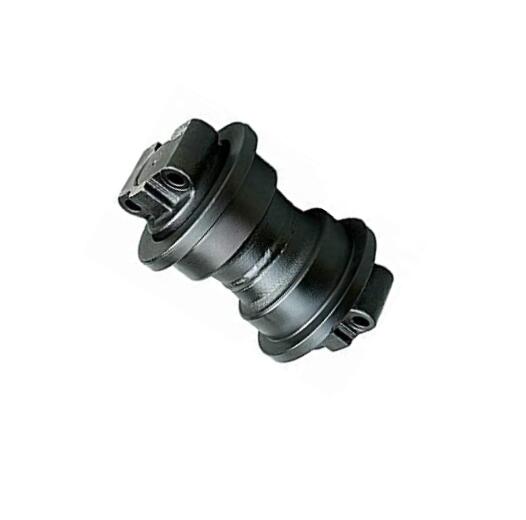The lifespan of a carrier roller can be affected by several operating conditions.
Here are some common factors that can impact the durability and performance of a carrier roller:
Load capacity: The load capacity of the excavator and the weight of the materials being moved can put a significant amount of stress on the carrier roller, which can impact its lifespan.
Operating temperature: High temperatures can cause the carrier roller to expand and contract, which can lead to premature wear and tear on the part.
Operating environment: The operating environment can also impact the lifespan of the carrier roller. For example, exposure to dust, dirt, and debris can cause the part to wear more quickly, while exposure to moisture or corrosive materials can cause rust and other damage.
Maintenance practices: Proper maintenance is essential to ensuring the longevity and performance of the carrier roller. Regular cleaning, lubrication, and inspection can help to identify and address any issues before they become more serious.
Frequency of use: The frequency of use can also impact the lifespan of the carrier roller. Frequent use can cause the part to wear more quickly, while infrequent use can cause the part to deteriorate over time due to lack of use.
Overall, the lifespan of a carrier roller can be impacted by a variety of factors, and it is important to consider these factors when selecting a carrier roller and when developing a maintenance plan for the part. By taking appropriate precautions and implementing good maintenance practices, it is possible to extend the lifespan of the carrier roller and ensure reliable performance over time.
How can I identify if my carrier roller is experiencing premature wear and tear?
There are several signs that your carrier roller may be experiencing premature wear and tear.
Here are some common indicators to look for:
Noise: If you hear unusual noises coming from the undercarriage system, such as grinding or squeaking sounds, it may be a sign that the carrier roller is worn or damaged.
Vibration: Excessive vibration while operating the excavator can be a sign that the carrier roller is not functioning properly or is worn.
Uneven wear: If the carrier roller is wearing unevenly or shows signs of damage or deformation, it may be a sign of premature wear and tear. Check for flat spots, cracks, or other signs of damage.
Reduced performance: If the excavator is not operating as smoothly or efficiently as it should, it may be a sign that the carrier roller is not functioning properly. This can include issues such as reduced speed, China HITACHI EX200-5 Excavator Undercarriage Part Carrier Roller decreased maneuverability, or decreased power.
Visual inspection: Regular visual inspections of the undercarriage system can help to identify signs of premature wear and tear on the carrier roller. Look for signs of excessive wear, damage, or deformation on the roller and surrounding components.
If you notice any of these signs, it is important to address the issue as soon as possible to prevent further damage to the undercarriage system. This may involve replacing the carrier roller or taking other measures to repair or maintain the part. Consult with a qualified technician or equipment manufacturer for guidance on the appropriate steps to take based on the specific condition of the carrier roller.
